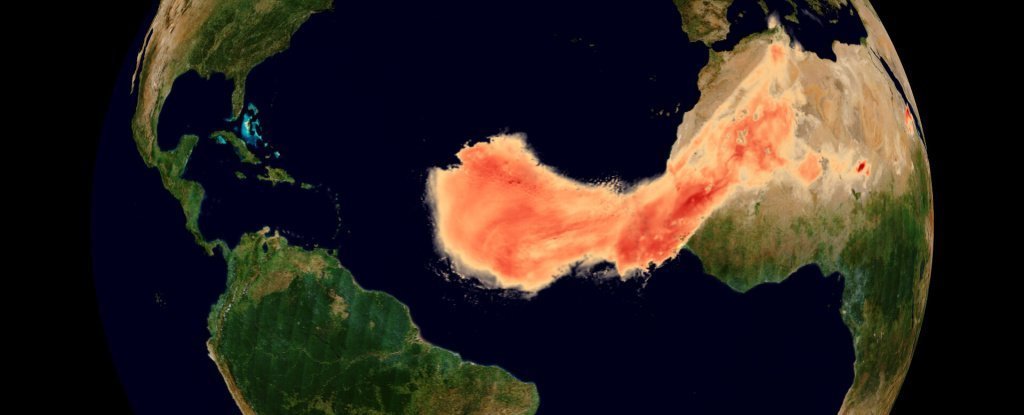Dust swept from the Sahara desert provides life at the bottom of the marine food chain with a crucial nutrient: iron.
A new study led by the University of California, Riverside, reveals the incredible journey of this elemental resource and its transformation that benefits life far from its origin.

According to biogeochemist Timothy Lyons, the longer the dust stays aloft and travels, the more its iron is converted into a form easily utilized by the biosphere below.
This dust serves as “proof of concept” that iron-laden particles can have extensive impacts on distant ecosystems.
North Africa’s barren landscape is Earth’s primary source of airborne particles.
Annually, winds transport approximately 800 million metric tons of Saharan dust westward toward the Americas.
This dust carries isotopes of iron essential for biochemical processes that convert atmospheric carbon into organic molecules.
The availability of iron, however, is limited, making its distribution critical for life on Earth.
Not all iron is easily accessible to organisms. Atmospheric conditions significantly influence the form of iron that finally settles on the ocean surface.
Lyons explains that the dust reaching the Amazon Basin and the Bahamas contains particularly soluble iron due to the longer exposure to atmospheric chemical processes during its extensive journey.
By analyzing oceanic drill cores, researchers like biogeochemist Bridget Kenlee have found that while the total dust volume decreases with distance, the amount of biologically accessible iron actually increases.
This means atmospheric chemical processes are progressively converting less bioavailable iron into forms more easily used by life.
This bioactive iron from Saharan dust fuels an extensive food chain thousands of miles from its origin.
It fertilizes phytoplankton in the ocean, which forms the foundational layer of marine food webs and supports plant life all the way to the Amazon Basin.
These systems, in turn, produce a significant portion of the oxygen we breathe.
Previous studies have linked these areas of bioactive iron with heightened biological activity, from increased surface microbe activity and Caribbean coral growth to the Amazon’s verdant flora.
One seven-year study found that an average of 28 million metric tons of North African dust provides the Amazon River basin with about 22,000 tons of essential fertilizing phosphorus each year.
Similar research indicates that dust from Asia has played a role in fertilizing Hawaii’s rainforests for millennia.
However, these dust plumes aren’t always beneficial.
They can cause allergies in humans and even smother hurricanes, highlighting the dual nature of these natural phenomena.
Despite these challenges, the lofted soil of the Sahara plays a vital role in sustaining life across our planet.
This ongoing research underscores the intricate interconnectedness of Earth’s physical processes and the life they support.
The full findings were published in Frontiers in Marine Science.
